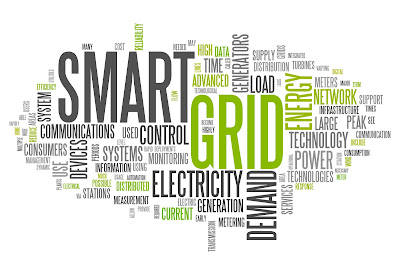What is Electrical Grid?...It's Onset and Development .
The first alternating current power grid system was installed in 1886. At that time, the grid was a centralized unidirectional system of electric power transmission, electricity distribution, and demand-driven control.
In the 20th century local grids grew over time, and were eventually interconnected for economic and reliability reasons. By the 1960s, the electric grids of developed countries had become very large, mature and highly interconnected, with thousands of 'central' generation power stations delivering power to major load centers via high capacity power lines which were then branched and divided to provide power to smaller industrial and domestic users over the entire supply area. The topology of the 1960s grid was a result of the strong economies of scale: large coal-, gas- and oil-fired power stations in the 1 GW (1000 MW) to 3 GW scale are still found to be cost-effective, due to efficiency-boosting features that can be cost effective only when the stations become very large.
Power stations were located strategically to be close to fossil fuel reserves (either the mines or wells themselves, or else close to rail, road or port supply lines). Citing of hydro-electric dams in mountain areas also strongly influenced the structure of the emerging grid. Nuclear power plants were sited for availability of cooling water. Finally, fossil fuel-fired power stations were initially very polluting and were cited as far as economically possible from population centers once electricity distribution networks permitted it. By the late 1960s, the electricity grid reached the overwhelming majority of the population of developed countries, with only outlying regional areas remaining 'off-grid'.
Metering of electricity consumption was necessary on a per-user basis in order to allow appropriate billing according to the (highly variable) level of consumption of different users. Because of limited data collection and processing capability during the period of growth of the grid, fixed-tariff arrangements were commonly put in place, as well as dual-tariff arrangements where night-time power was charged at a lower rate than daytime power. The motivation for dual-tariff arrangements was the lower night-time demand. Dual tariffs made possible the use of low-cost night-time electrical power in applications such as the maintaining of 'heat banks' which served to 'smooth out' the daily demand, and reduce the number of turbines that needed to be turned off overnight, thereby improving the utilization and profitability of the generation and transmission facilities. The metering capabilities of the 1960s grid meant technological limitations on the degree to which price signals could be propagated through the system.
Through the 1970s to the 1990s, growing demand led to increasing numbers of power stations. In some areas, supply of electricity, especially at peak times, could not keep up with this demand, resulting in poor power quality including blackouts, power cuts, and brownouts. Increasingly, electricity was depended on for industry, heating, communication, lighting, and entertainment, and consumers demanded ever higher levels of reliability.
Towards the end of the 20th century, electricity demand patterns were established: domestic heating and air-conditioning led to daily peaks in demand that were met by an array of 'peaking power generators' that would only be turned on for short periods each day. The relatively low utilisation of these peaking generators (commonly, gas turbines were used due to their relatively lower capital cost and faster start-up times), together with the necessary redundancy in the electricity grid, resulted in high costs to the electricity companies, which were passed on in the form of increased tariffs. In the 21st century, some developing countries like China, India and Brazil were seen as pioneers of smart grid deployment.
Now, What is the scope of improvement?
Simply, it is SMART GRID!
P.S.:The image belongs to Mary University.
P.S.:The image belongs to Mary University.




Comments
Post a Comment